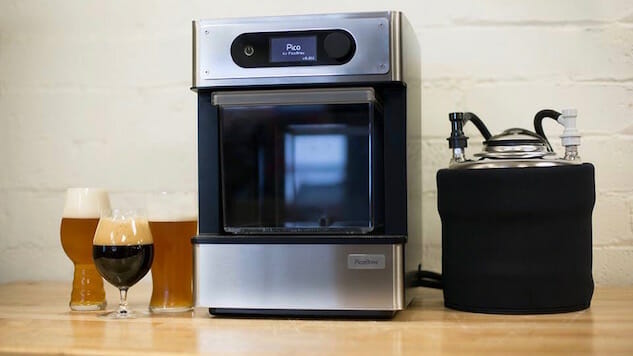Brewing an IPA with Pico Brew

Note: We’re giving away a Pico system in a contest ending on Friday, Nov. 11. Sign up now!
I have a friend who makes his own crackers. I know. It sounds ridiculous, but he has a family of six and he says making crackers at home saves him serious coin. Also, he swears it’s fun. It’s possible that he and I have different definitions for the word “fun,” but honestly, crafting your own crackers isn’t that crazy in our new, maker-crazy culture that puts a premium on anything that was hand crafted. If you judge the world by Pinterest, everybody is making their own belts and beef jerky. And it’s awesome. I just don’t have it in me. I don’t even have the patience to grow a garden. I like the idea of cultivating my own tomatoes, in theory, but there are also three grocery stores within two miles of my house with excellent produce sections. Why bother growing my own when buying is so easy? Historically, I’ve felt the same way about brewing my own beer. Why go through all that effort when I can just buy a six-pack that’s definitely better than anything I could possibly brew in my garage? I’m not knocking home brewers. You keep doing what you do. Fist pound. I’m just not that kind of guy.
Or so I thought. Then I started playing around with Pico Brew, a sleek new appliance that promises to streamline the home brew process. Forget the home brew kits you dabbled with in college—this thing is an automated, fully dialed in system that aims to take a bit of the mystery and, difficulty, out of brewing your own beer.
Here’s the marketing pitch from Pico Brew: “The Pico is an automated beer brewing appliance that can brew 5 liters of craft beer in about 2 hours and grain-to-glass serving time of less than one week. It uses ready-to-brew PicoPak ingredient kits from the worldwide BrewMarketplace.”
-

-

-

-

-

-

-

-

-

-

-

-

-

-

-

-

-

-

-

-

-

-

-

-

-

-

-

-

-

-

-

-

-

-

-

-

-

-

-

-








































